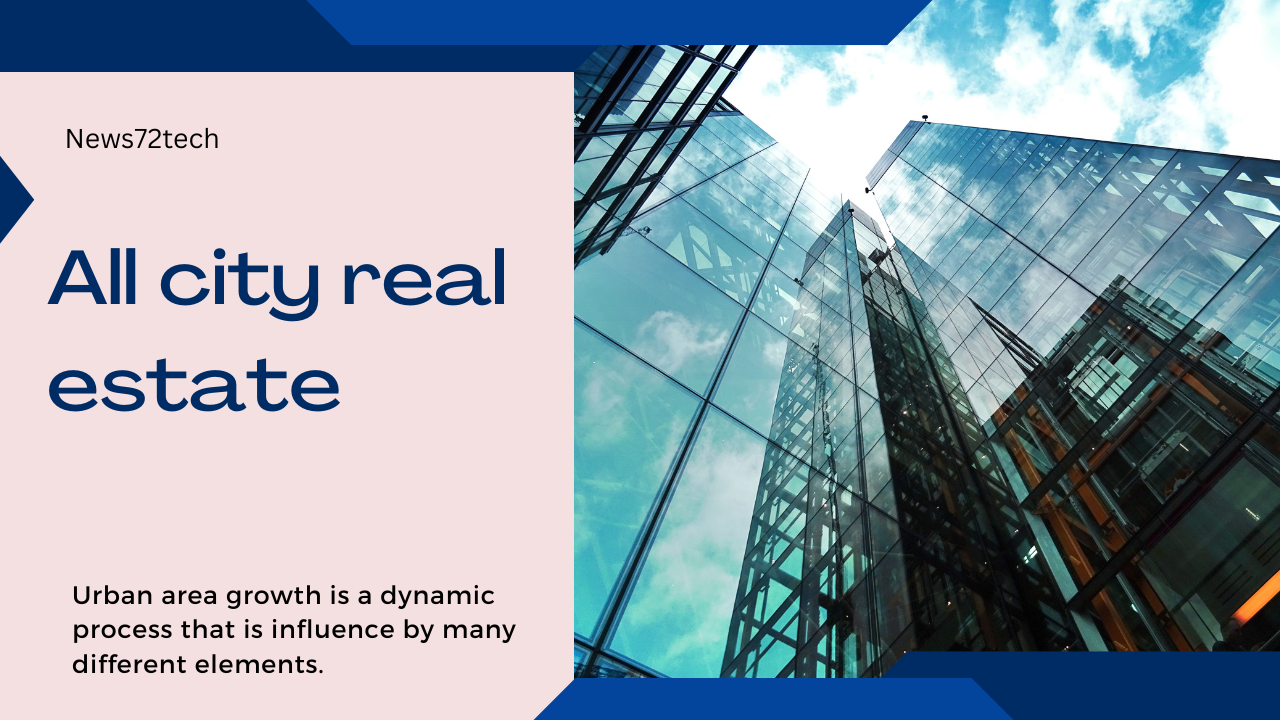First of all,
Urban landscapes are colorful tapestry of human culture, economic might, and social development rather than merely a collection of structures and highway. The pulsating real estate market in these cities reflects the constantly shifting demands and aspirations of its residents. We take a deep dive into the complex world of all-city real estate in this in-depth piece, examining its many facets. Examining its difficulties, and projecting its future.
Urban Real Estate’s Allure:
Urban real estate has an allure that is hard to resist, attracting businesses, homeowners, and investors alike. The promise of possibility, accessibility, and connected is what makes it so alluring. Cities are hubs of innovation, business, and culture, making them ideal locations for real estate investment and development. There are many different types of properties in the urban setting. Each with its own appeal and potential, ranging from majestic brownstones to tall skyscrapers.
The Mechanisms Underlying Urban Growth:
Urban area growth is a dynamic process that is influence by many different elements. Such as government policies. Economic trends. And population intake. The demand for real estate rises as cities grow, changing neighborhoods and raising property values. Urban development’s double-edged sword. Gentrification. Revitalizes underutilize neighborhoods . While uproot long. Time residents. All, city real estate stakeholders continue to face a critical challenge in striking a balance between the forces of growth and inclusion.
The Development of Mixed-Use Properties:
Mixed-use developments are becoming a popular trend in all. City real estate as a response to the changing needs of urban people. These projects combine commercial, residential, and recreational areas into one complex, promoting convenience and a sense of community. Mixed-use developments. Which provide a well-balanced combination of work, play. And leisure, are redefining urban living in places like Singapore’s Marina Bay Sands and New York’s Hudson Yards.
Technology’s Effect:
Every aspect of urban real estate is being revolutionized by technology, from property management systems to construction methods. IoT. Enabled smart buildings maximize energy efficiency and improve tenant comfort. And virtual reality makes it easier for potential purchasers to take immersive property tours. Blockchain technology improves transparency and streamlines real estate deals by cutting down on paperwork. The all-city real estate market is changing dramatically as cities embrace the internet era.
Resilience and Sustainability:
Urban development now places a strong emphasis on sustainability as environmental concerns grow. Energy expenses are decreased and carbon emissions are reduced by using green building techniques like solar panels and green roofs. By strengthening structures against natural disasters, resilient design techniques guarantee the security and continuation of urban communities. Resilience and sustainability principles must be integrated into all-city real estate projects as climate change gets worse.
Opportunities and Difficulties:
Urban real estate has many obstacles despite . Its appeal such as inadequate infrastructure and difficulties in affordability. Rising real estate costs drive out low- and middle-class citizens from metropolitan centers, aggravating income disparity. Urbanization puts strain on aging infrastructure, endangering cities’ ability to remain competitive and livable. But these difficulties also present chances for creativity and teamwork. Important infrastructure projects can be financed through public-private partnerships, and inclusive zoning laws encourage fair growth.
All-City Real Estate’s Future:
Look ahead, the potential direction of all. City real estate seems both hopeful and unstable. Global migratory patterns are driving rapid urbanization. Which will continue to change the urban environment and bring with it new opportunities and difficulties. A new era of efficiency and connectivity will be ushered in by the widespread adoption of smart technology. Which will completely transform the way we plan, construct, and live in urban areas. But achieving this goal will need forethought. Sustainable methods, and a dedicate to social justice.
In summary:
Real estate is the fundamental thread that unites neighborhoods in the mosaic of urban life. Every city’s real estate, from the busy streets of Tokyo to the elegant boulevards of Paris. Is a reflection of the goals and ideals of its people. In the process of navigating the complexity of urban growth and development, let us work to build inclusive, resilient. And sustainable cities where every person has the chance to prosper. Through this endeavor, the fabric of urban real estate changes, interlacing our journey’s past, present, and future.




